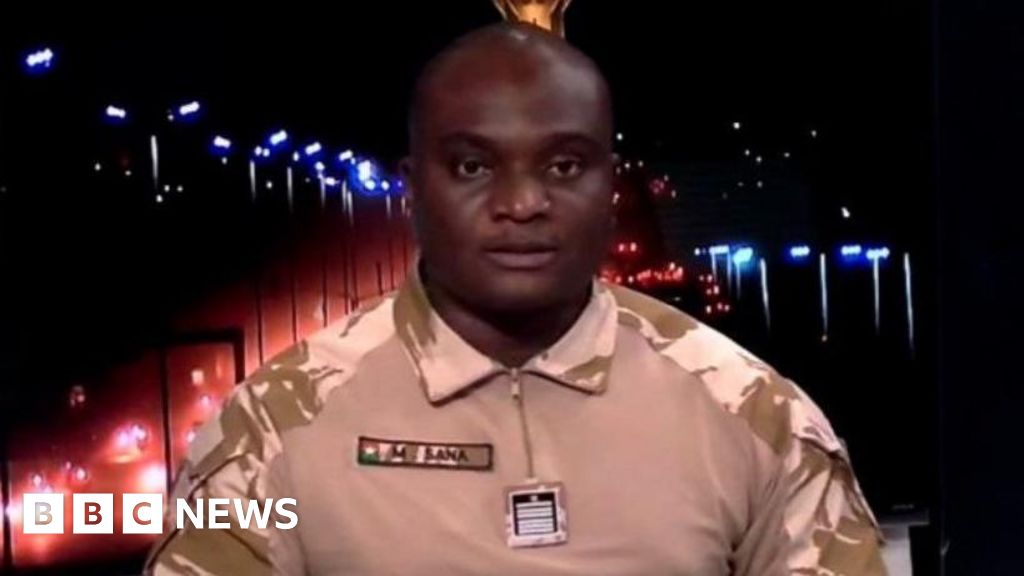- Sustainability
Emotionally competent partners are valuable to workers and bosses alike
时间:2010-12-5 17:23:32 作者:News 来源:Fashion 查看: 评论:0内容摘要:“This attack is an unacceptable breach of international norms,” Kaja Kallas, the EU’s foreign policy chief, said. “The EU will not tolerate hostile cyber actions.”“This attack is an unacceptable breach of international norms,” Kaja Kallas, the EU’s foreign policy chief, said. “The EU will not tolerate hostile cyber actions.”
to see when it begins in your area. The spectacle is slotted during sunrise for most of the Americas, late morning for western Europe and Africa and afternoon for eastern Europe and northern Asia.During the eclipse, the sun will slowly slim to a crescent as the moon appears to cover it and the day may get dimmer.

“It will feel like a particularly cloudy day,” said Juan Carlos Muñoz-Mateos with the European Southern Observatory.Check weather conditions before heading outside. Clear skies away from tall buildings and city lights are best, especially in the Americas where the sun may be rising during the eclipse.Grab eclipse glasses ahead of time to spot the sight safely through a local science museum or ordering online from a seller cleared on the American Astronomical Society’s website.

Viewers can also enjoy the spectacle through indirect ways such as making a pinhole projector using household materials. Holding up a colander will produce a similar effect. Peering at the ground under a shady tree can yield crescent shadows as the sunlight filters through branches and leaves.Another total lunar eclipse and partial solar eclipse will return in September with the best solar eclipse views in Antarctica and New Zealand.

The Associated Press Health and Science Department receives support from the Howard Hughes Medical Institute’s Science and Educational Media Group and the Robert Wood Johnson Foundation. The AP is solely responsible for all content.
BASEL, Switzerland (AP) — Ukraine’s musicians can’t escapeThe administration has also repeatedly emphasized the men’s criminal histories in the U.S. and portrayed them as national security threats.
The Trump administration has increasingly relied on third countries to take immigrants who cannot be sent to their home countries for various reasons. Some countries simply refuse to take back their citizens being deported while others take back some but not all of their citizens. And some cannot be sent to their home countries because of concerns they’ll be tortured or harmed.Historically that has meant that immigration enforcement officials have had to release people into the U.S. that it wants to deport but can’t.
But the Trump administration has leaned on other countries to take them. In the Western Hemisphere, El Salvador, Costa Rica and Panama have all agreed to take some people being removed from the U.S., with El Salvador being the most controversial example because it is holding people deported from the U.S. in a notorious prison.The Trump administration has said it’s exploring other third countries for deportations.
- 最近更新
- 2025-07-07 10:21:34What we know about Israeli embassy staff shooting
- 2025-07-07 10:21:34Did Trump really strike Gulf deals worth $2tn?
- 2025-07-07 10:21:34Climate Questions: What's going on with climate change?
- 2025-07-07 10:21:34Early human ancestors used their hands to both climb trees and make tools, new study shows
- 2025-07-07 10:21:34Trump looks to unite Republicans before votes on tax cut bill
- 2025-07-07 10:21:34Police confirm 109 people injured in parade crash
- 2025-07-07 10:21:34As political theater took center stage in Turkey, the war went on in Ukraine. Kyiv has few options
- 2025-07-07 10:21:34Diplomats in Zimbabwe embrace local culture in a lively cooking contest
- 热门排行
- 2025-07-07 10:21:34Is bundling your insurance worth the discount? The pros and cons of one-stop policies
- 2025-07-07 10:21:34In New Zealand's Parliament, a battered cookie tin decides which new laws get debated
- 2025-07-07 10:21:34annual cost-of-living adjustments
- 2025-07-07 10:21:34The fallout from Trump's war on Harvard will long outlast his presidency
- 2025-07-07 10:21:34Portable Air Conditioner 8,000 BTU
- 2025-07-07 10:21:34Congo's government and rebels say they are working toward a truce in the east
- 2025-07-07 10:21:34How to get a defensive driving discount on your auto insurance
- 2025-07-07 10:21:34Alonso says Aston Martin's big bet on 2026 F1 season will weigh heavily on his driving future
- 友情链接
- Israeli embassy staffers shot dead in DC: What we know of attacker, victims Pakistan promotes army chief Asim Munir to field marshal: Why it matters US Supreme Court rejects Native American case against large copper mine Far-right figure Tommy Robinson released early from UK prison All-female crew completes space tourism journey Kylian Mbappe wins European Golden Shoe award for first time Man United end season ranked 15th after controversial win over Aston Villa Heavy rains lash Mumbai amid India’s ‘earliest’ monsoon in years Why are the US and EU struggling to reach a trade deal? Texas to require age verification for app purchases 100 photos from Palestine Influencer shot live on TikTok: How rampant is femicide in Mexico? Why is El Salvador’s President Bukele targeting foreign-funded nonprofits? Trump visits the Middle East: All the countries visited by US presidents Why has the US lost its AAA credit rating, and why does it matter? Local communities vow to fight new Panama Canal reservoir A lens on poverty and the environment: Sebastiao Salgado is dead at age 81 Why are the US and EU struggling to reach a trade deal? NPR sues Trump administration for cutting US federal funding Palestinians see plan to push them from land as Israel builds national park Humans outrun robots at Beijing half-marathon Hamas agrees to a Gaza ceasefire, sources say; US and Israel reject offer US Steel shares soar on Trump’s apparent blessing for deal with Nippon Thunder-Timberwolves: SGA scores 40 as OKC win Game 4 in NBA West finals Key takeaways from King Charles’s ‘Speech from the Throne’ in Canada Aftermath of deadly US air strikes on Yemen Lamine Yamal: Barcelona football star inspires youth in hometown Rocafonda Liverpool car ramming casts ‘dark shadow’ over victory parade Top Zimbabwe ambassador involved in gold smuggling scheme Heavy rains lash Mumbai amid India’s ‘earliest’ monsoon in years
